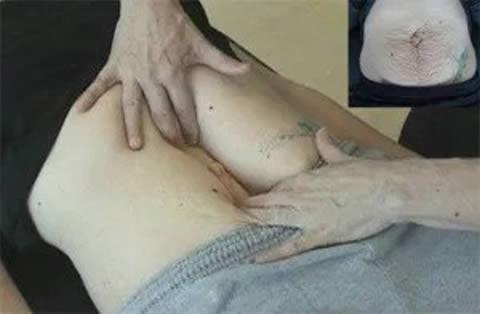
Mommy tummy aka diastasis recti abdominis (DRA) is a prevalent issue.
One in three American moms have DRA that persists greater than a year.
So what is a diastasis recti? It is the stretching of the linea alba, a connective tissue that runs down the midline of the abdomen and connects the abdominal muscles. The stretching happens during pregnancy in almost 100% of mothers to make room for a growing baby. Many of these moms are told this is a normal part of pregnancy, even by their healthcare providers.
DRA is not just about appearance, it is also connected to pelvic floor dysfunctions as well as pelvic and low back pain. In a study by Kari Bo et al., they found that mothers in the US with DRA were also more likely to have the following:
- myofascial pelvic pain 33%
- urinary incontinence 48%
- fecal incontinence 7%
- uterus prolapse 52%
- bladder prolapse 57%
- rectal prolapse 43%
With DRA being so prevalent and having many co-existing conditions, why do we still normalize this? Currently, postpartum therapy is not standard practice in the US like it is in Germany and France, who lead in postpartum rehabilitation. This remains the case despite the American College of Obstetricians and Gynecologists (ACOG) updating their postpartum care guidelines. The American College of Obstetricians and Gynecologists makes the following recommendations and conclusions:
To optimize the health of women and infants, postpartum care should become an ongoing process, rather than a single encounter, with services and support tailored to each woman’s individual needs.
Anticipatory guidance should begin during pregnancy with development of a postpartum care plan that addresses the transition to parenthood and well-woman care.
Prenatal discussions should include the woman’s reproductive life plans, including desire for and timing of any future pregnancies. A woman’s future pregnancy intentions provide a context for shared decision-making regarding contraceptive options.
All women should ideally have contact with a maternal care provider within the first 3 weeks postpartum. This initial assessment should be followed up with ongoing care as needed, concluding with a comprehensive postpartum visit no later than 12 weeks after birth.
The timing of the comprehensive postpartum visit should be individualized and woman centered.
The comprehensive postpartum visit should include a full assessment of physical, social, and psychological well-being.
Women with pregnancies complicated by preterm birth, gestational diabetes, or hypertensive disorders of pregnancy should be counseled that these disorders are associated with a higher lifetime risk of maternal cardiometabolic disease.
Women with chronic medical conditions, such as hypertensive disorders, obesity, diabetes, thyroid disorders, renal disease, mood disorders, and substance use disorders, should be counseled regarding the importance of timely follow-up with their obstetrician–gynecologists or primary care providers for ongoing coordination of care.
For a woman who has experienced a miscarriage, stillbirth, or neonatal death, it is essential to ensure follow-up with an obstetrician–gynecologist or other obstetric care provider.
Optimizing care and support for postpartum families will require policy changes. Changes in the scope of postpartum care should be facilitated by reimbursement policies that support postpartum care as an ongoing process, rather than an isolated visit.
A more detailed list of ACOG’s guidelines can be found here https://www.acog.org/clinical/clinical-guidance/committee-opinion/articles/2018/05/optimizing-postpartum-care
Another limiting factor is that most medical insurance companies do not cover DRA or postpartum rehabilitation. However, the information regarding DRA is on the rise. Published studies have more than doubled in the last ten years (Aswini et al.,2019). Even with all this new data, there are still many myths and misnomers as to what is “normal vs common” postpartum. As more women continue to advocate for themselves and conversation on this matter continues to grow, we will hopefully begin to see these numbers decline.
Therapists who specialize in treating pelvic floor conditions are also trained to assess and rehabilitate DRA. Make an appointment with a trained therapist in your area, or contact us for in-office or telehealth sessions in California (or virtual consultations worldwide). This is not something you have to live with.
References:
Kn, S. S. (2019). An Overview of the Studies on Diastasis Recti Abdominis in Postpartum Women. Journal of Gynecology and Women’s Health, 14(5). doi:10.19080/jgwh.2019.14.555900
Kristian, B. (2020, October 22). A painful postpartum injury is plaguing America’s moms – but nobody really talks about it. Retrieved November 16, 2020, from https://theweek.com/articles/939114/painful-postpartum-injury-plaguing-americas-moms–but-nobody-really-talks-about
Sperstad, J. B., Tennfjord, M. K., Hilde, G., Ellström-Engh, M., & Bø, K. (2016). Diastasis recti abdominis during pregnancy and 12 months after childbirth: Prevalence, risk factors and report of lumbopelvic pain. British Journal of Sports Medicine, 50(17), 1092-1096. doi:10.1136/bjsports-2016-096065
